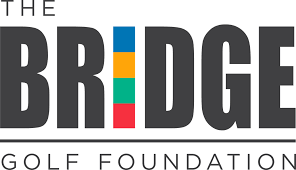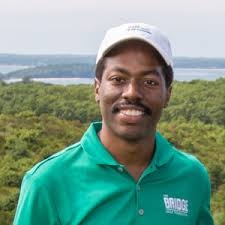 AUGUST 25, 2017–Two years ago, Juan Cortorreal had never held a golf club. And now here he was, a freshman from the Eagle Academy for Young Men of Harlem, competing against the top player from the Bronx High School of Science, one of the city’s best teams.
AUGUST 25, 2017–Two years ago, Juan Cortorreal had never held a golf club. And now here he was, a freshman from the Eagle Academy for Young Men of Harlem, competing against the top player from the Bronx High School of Science, one of the city’s best teams.
As his team’s No. 1 man, Juan had to tee off in the first group, in front of a crowd, at the Mosholu Golf Course in the Bronx, toward the end of the school year last May. Everyone fell hushed as he settled into his stance. With a patient backswing and whiplike follow-through, he sent his ball flying up the tree-lined fairway. He outdrove his opponent, a far more seasoned player, but proceeded to lose the hole and, eventually, the match, just as he had every other match all season. Afterward, though, he was practically ebullient.
“It was probably the most competitive match I’ve had,” Juan, 15, said. “It was fun; it was really fun.”
Juan and his identical twin, Antonio, are two of 20 Eagle Academy students who are avidly learning the game — and studying science, math and character lessons — with the Bridge Golf Foundation of Harlem. The group’s mission is to improve the lives and opportunities of young minority men through golf.
The golf program is the latest in a growing number of organizations in New York and across the country devoted to introducing minority youths to sports traditionally played mostly by whites and to providing mentoring and tutoring programs. Harlem alone has StreetSquash; Ice Hockey in Harlem; Harlem Lacrosse; and Dream, formerly Harlem RBI, which focuses on baseball and softball.
At a time when Harlem is undergoing rapid change — to the disappointment and outright disgust of some longtime residents — Farrell Evans, the primary architect of the golf foundation, said the program represents a model for progressive gentrification.
“People get too caught up on the idea of displacement,” said Mr. Evans, who has lived in Harlem for 17 years. “We’re an example of how you can make it work for everybody.”
The foundation, located on West 117th Street between Fifth and Lenox Avenues, is part of a neighborhood that bears little resemblance to how it looked just a few years ago. A Whole Foods opened at 125th Street and Lenox Avenue in late July, a capstone to a boulevard of restored brownstones where bistros and upscale coffee shops now outnumber the remaining dollar stores and bodegas.
Whole Foods Market opened in Harlem in July. Its arrival is one of the changes that has longtime residents of the neighborhood concerned about gentrification.
It’s not hard to find Harlem residents who lament the influx of wealth and newcomers in a neighborhood that once held the heart of black culture in America.
A community effort — backed by Adriano Espaillat, the Democrat who represents the 13th Congressional District — is afoot to thwart the real estate industry’s effort to rebrand the area between West 110th and West 125th Streets as SoHa (short for South Harlem).
Mr. Espaillat, who was unfamiliar with the Bridge Golf Foundation, said in an interview that any after-school program that provides academic enrichment, especially in science and technology, could be of great help to students anywhere. But he also said the foundation’s mission struck him as being “somewhat paternalistic” in what he considered to be an effort to “take students out of the basketball court and teach them a game where they can brush elbows with the very rich and elite of this city.”
 RELATED STORY: Bridge Golf Foundation Opens in Harlem, NY, To Bring More Minority Access to the Game
RELATED STORY: Bridge Golf Foundation Opens in Harlem, NY, To Bring More Minority Access to the Game
“SoHa, Whole Foods, displacement,” he said. “Is success coming at the expense of people that are living there?”
The Bridge Golf Learning Center, also the headquarters for the foundation, opened in May 2016. The center occupies a street-level space in the rear of a luxury condominium called the Adeline that was built in 2014.
The facility has three hitting bays. Cups for putting are sunk into the carpeted floor. When the foundation isn’t in session with the students, the center is open to the public — generally a high-paying clientele — for lessons with golf pros, club fittings, fitness screenings and open play on state-of-the-art simulators that spew data such as club speed and carry distance.
Juan and Antonio know all of their numbers.
“Today I hit 275,” Juan said on a recent afternoon at the learning center, referring to how many yards he hit the ball off a tee with his driver. It was his longest drive yet. Antonio’s was 266. Either would be the envy of most recreational golfers.
The students at the center are seventh through 10th graders. All of them have enrolled by choice, but as a requirement of enrollment they must go to the learning center at least four days a week after school. The organization also offers a seven-week summer program. Many of the students spent July and the first half of August preparing for state Regents exams. The twins focused on geometry, Juan in hopes of improving upon a 72, Antonio with the goal of passing. Each passed the earth science exam with ease.
Students must attend classes after school four days a week at the learning center. Sitting in their fourth-floor walk-up, above a West African grocery and a shuttered pizzeria, the twins’ father, Hector Cortorreal, said the golf center, along with Eagle Academy, the public school his sons attend, has provided much-needed focus in their lives. “I always see them doing their homework,” he said, gesturing toward the dining table in the narrow apartment.
 RELATED STORY: Getting More People of Color Into a $70 Billion Industry
RELATED STORY: Getting More People of Color Into a $70 Billion Industry
The Eagle Academy for Young Men of Harlem is one of six schools — one in each New York City borough and another in Newark — run by the Eagle Academy Foundation. The Bridge Golf Foundation chose to become partners with Eagle Academy, Mr. Evans said, because their missions align. Each is dedicated to providing educational opportunities to urban young men of color. He said his foundation drew inspiration from the national movement to better address the needs of this at-risk group, citing former President Barack Obama’s My Brother’s Keeper initiative and the Young Men’s Initiative spearheaded by former Mayor Michael R. Bloomberg.
Both the Bridge Golf Foundation and the Eagle Academies include character education in their curriculums to encourage students’ social and emotional development. This summer, for example, the Bridge students read “The Pact,” a memoir about three young black men who, while growing up in Newark, promised one another they would become doctors and overcame hardships to fulfill their dream.
Read more by Paul Rogers at NYTIMES.COM



